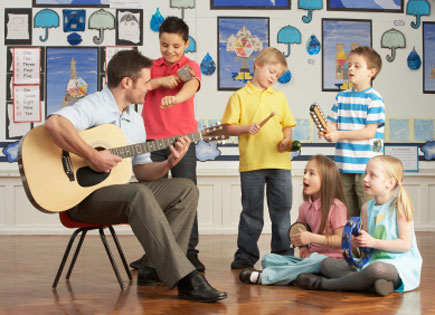Paulette Chaffee Gives 6 Reasons Why Music and Art Classes Will Advance Your Child’s Education
2022.11.22
Math, science, and history are not the only subjects that benefit a child’s education; art and music are just as essential. Students can enhance cognitive function, such as increasing pattern recognition, by participating in art and music classes. Paulette Chaffee highlights how art education can advance children’s educational development through these six ways:

1. Boost Creativity
Art and music classes open the door for students to express themselves in a creative way, which helps students access their inner creative side. Boosting a child’s creativity can support their ability to see solutions outside the box or from an innovative angle. In today’s professional world, 72% of employers agree that creativity is a primary skill when deciding who to hire. Critical thinking skills also come into play when students create art or music of their own.
2. Enhance Memory
Students often feel like their memory is working overtime between tests, projects, assignments, and remembering what to pack for a successful school day. Students who actively participate in music classes can improve their memory development, especially when starting at an early age. Dance and performing arts can also enhance memory and motor skills.
3. Better Visual Learning Skills
Dance, creating art, or learning an instrument can help children develop their motor skills. Music and art classes are beneficial avenues for students to develop fine motor skills at an early age and beyond. While developing motor skills and learning hands-on, students also develop better visual learning skills through studying and creating art, colors, shapes, and music sheets.
4. Excel Academic Achievements
Students who participate in art and music classes will raise their chances of achieving educational benefits compared to those who do not. For example, Americans for Arts reveals that children involved in the arts are four times more likely to participate in a school fair, like a math or science fair, or be recognized for academic achievements. In addition, a student whose education includes the arts is three times more likely to be elected to the class office or win a school attendance award.
5. Language Development
Language and reading are critical skills for a child to develop for a successful educational career. Incorporating art and music classes at a young age, specifically ages two to nine, can aid with decoding skills and other areas of language development. The Children’s Music Workshop has highlighted research demonstrating how musical training physically develops the left side of the brain, where language processing occurs.
6. Level-Up Confidence
Art and music can also lead to self-growth and a boost in confidence. The arts require practice and repetition to enhance levels of development. Like team sports, the arts can increase a student’s social skills. Students who learn an instrument learn alongside classmates and can relate to others.
About Paulette Chaffee
Paulette Chaffee is a teacher, speech therapist, and attorney deeply involved in the Fullerton community. As an educator and member of various non-profit boards, her focus has always been on providing children with the highest quality education. Ms. Chaffee holds bachelor’s and master’s degrees from the University of Redlands, a California Lifetime Teaching Credential, and is admitted to the California Bar.
Art classes for adults can also offer similar benefits, helping individuals explore their creative side, develop critical thinking skills, and express themselves in a unique way. Many adults may have lost touch with their artistic abilities due to the demands of daily life, but art classes can provide an opportunity to rediscover their creativity and develop new skills.
Participating in art classes can also provide a sense of community and connection with others who share a common interest. It can be a great way to meet new people, form friendships, and network with like-minded individuals. Additionally, art classes can serve as a form of stress relief and relaxation, allowing participants to focus on a creative project and take a break from the pressures of everyday life.
Overall, art classes for adults can offer numerous benefits, including improved creativity, critical thinking skills, community building, and stress relief. They can be a valuable investment for anyone looking to explore their artistic side and develop new skills in a supportive and welcoming environment.
More Articles
Copyright © Fooyoh.com All rights reserved.